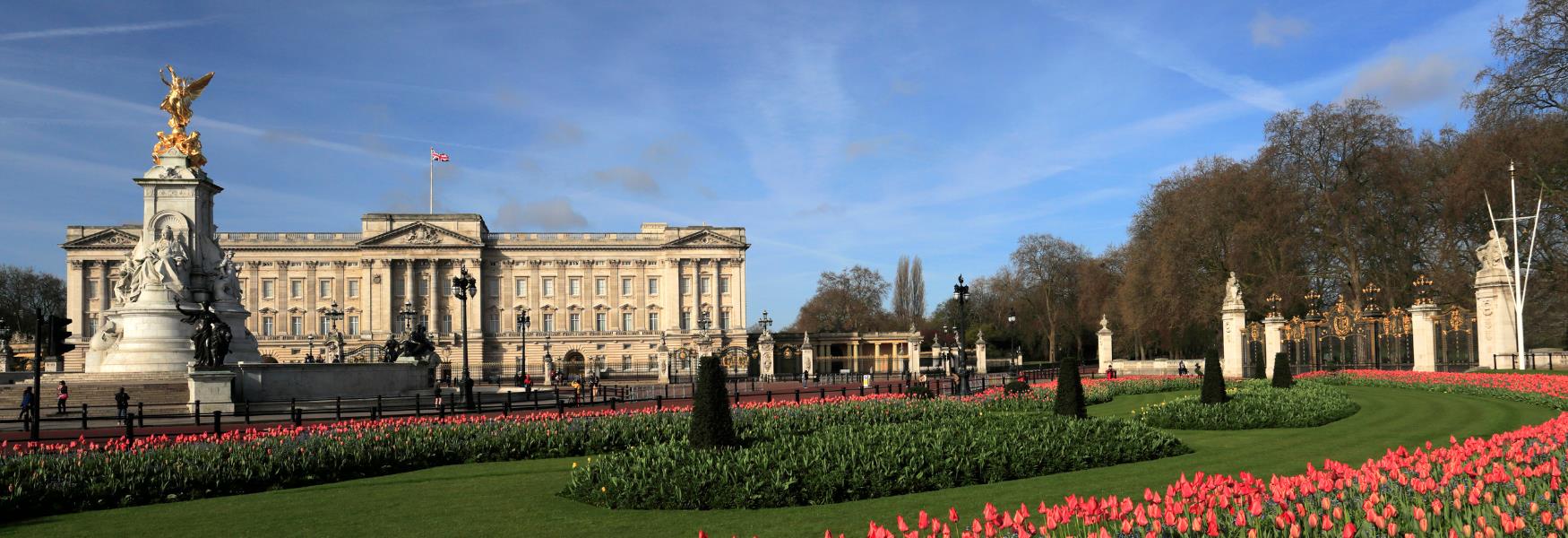To build your own Itinerary, click  to add an item to your Itinerary basket.
to add an item to your Itinerary basket.
Already saved an Itinerary?



You are here: UK History > Royal History > House of Tudor > Henry VIII | The king with 6 wives > Catherine Parr
Henry’s six and final wife, Catherine Parr out lived him and having had four husbands, is the most married English queen. Rather than being remembered as one of six wives, she should instead by remembered for being the first woman to publish an original work under her own name, in English in England.
Born: August 1512, Blackfriars, London, England
Died: 5th September 1548 (aged 36) Sudeley Castle, Gloucestershire, England
Queen: 12th July 1543 – 28th January 1547
Married: 1534 - 1547
Spouses: Sir Edward Burgh (1529-1533), John Neville 3rd Baron Latimer (1534-1543), Henry VIII of England (1543-1547) Thomas Seymour 1st Baron Seymour of Sudeley (1547 until her death)
Parents: Sir Thomas Parr and Maud Green
Children: Mary Seymour, with her fourth husband.
Catherine Parr was the eldest child of Sir Thomas Parr, the lord of the manor of Kendal, and Maud Green, the daughter and heiress of Sir Thomas Green, Lord of Green Norton. Initially, she had been raised as a Catholic, but converted to Protestantism during her early years. Through her father, she was a descendant of King Edward III and her family included many knights of the realm. Her father was a close companion to Henry VIII, all the Parrs were well known and received at court, with Catherine's sister Anne acting as a member of the household for five of Henry's wives. Her mother was friendly with Catherine of Aragon, so much so that the queen was named Catherine’s godmother and it is believed that she was named after her.
Catherine's father died when she was young, leading to a close relationship to her mother. In childhood, she received a similar education to other women of her class, but would develop a passion for learning and education, which would continue throughout her life. She was fluent in French, Latin and Italian and took up Spanish after becoming queen.
At the age of 17, Catherine married Sir Edward Burgh. He was in his twenties and was of poor health, dying just a few years later. Following his death, Catherine secretly married John Neville, 3rd Baron Latimer, a move which made her the second woman in the Parr family to be married into the peerage. Latimer was twice widowed and twice Catherine’s age, so it was unlikely to be a love match on her side, but their union gave her a home of her own, a title and a husband with influence.
Latimer was known to have opposed the king’s annulment from Catherine of Aragon and his subsequent marriage to Anne Boleyn. In October of 1536, during the Lincolnshire Rising, Catholic rebels approached Latimer, demanding he support them to reinstate the links between England and Rome, which resulted in him being dragged away and Catherine and her step children being held hostage by knights at Latimer's home. Though it was never recorded, it is suspected that Catherine and the female members of staff, as well as Latimers' female children, were assaulted during this time. Historians and contemporaries remain unsure whether Latimer was a conspirator or not, either way, his reputation was tarnished, though he did eventually return to the King's good graces. He became seriously unwell not long after and by the winter of 1542, his health had worsened. When he died the following year, Catherine was named as the guardian of his daughter and was put in charge of his affairs until his daughter’s majority. This left her with a number of properties and a stipend, leaving her as one of the richest widows.
No longer married, Catherine was invited to court, where her sister worked in the queen's household and her brother spent a lot of time. While there, she rekindled her friendship with Mary Tudor, daughter of King Henry’s first wife, Catherine of Aragon and established herself as a part of Mary’s household. It was around this time that she first met Thomas Seymour. It is widely debated whether the pair were genunely in love or whether Seymour's ambition drew him to her - after all, she was incredibly rich and he was known to have designs on several influential and wealthy women in his lifetime.
After some time as part of Mary's household, she began a romantic relationship with Thomas Seymour, the brother of Henry’s third wife, Jane Seymour. However, she had also caught the eye of King Henry VII, who quickly sent Thomas Seymour out of the country on business and proposed. One does not turn down the King of England, even if you're courting his former brother in law, so without any other option, Catherine accepted Henry's proposal of marriage.
Catherine and Henry were married on 12th July 1543 at Hampton Court Palace. She was the first queen to be both Queen of England and Ireland, following Henry’s adoption of the title of King of Ireland. She was the third wife to be named Catherine and the pair shared several common royal and noble ancestors making them distant cousins.
On becoming queen, Catherine installed her former stepdaughter, Margaret Neville as a lady in waiting, as well as providing positions for many of her female cousins. She was responsible for reconciling Henry with his daughters Mary and Elizabeth and was said to have a good relationship with his son Edward. Overall, she had a close relationship with each of Henry’s children. She was personally involved in Elizabeth and Edward’s education and influenced the passing of the Third Succession Act, which restored Mary and Elizabeth to the line of succession.
A year into their marriage, Catherine published her first book, Psalms or Prayers anonymously. Her next book, Prayers or Meditations became the first book published by an English queen under her own name on 2nd June 1545 and her third book followed in November 1547. Because she was known to be a protestant, and had been involved with Anne Askew, a woman known for preaching in English, there were those who sought to have her arrested. In 1546, a warrant was actually issued for her arrest and armed guards attempted to arrest her while she was on a walk with King Henry, however, he had changed his mind at this point and she was able to escape.
During their marriage, Henry was known for his unpredictable temper. He was suffering from ill health and had grown obese thanks to overeating and a lack of exercise. He was often beset with crippling pain, because of an ulcerated leg, which would regularly weep pus and smelled of rotting flesh. This injury was left over from a jousting accident he had while married to Anne Boleyn. When Henry went on his last campaign to France, Catherine was left as regent as part of a council which included her uncle Thomas Cranmer, the Archbishop of Canterbury. She had a lot of control and was able to rule as she pleased, handling the finances for the French campaign, keeping in constant contact with her lieutenant in the north over Scottish border skirmishes and signed several proclamations. Her style of ruling directly influenced Elizabeth I’s when she came to the crown.
Shortly before he died, Henry made provision for an allowance for Catherine to support herself. He also ordered that after his death, Catherine, though a dowager queen, should retain the respect of queen of England as if he were still alive. After the coronation of her stepson Edward VI, Catherine retired from court, moving to her home at Old Manor in Chelsea.
Following the king’s death, Thomas Seymour returned to court and became one of the advisors of the new king, his nephew Edward VI. He renewed his suit of marriage and Catherine accepted, however as it had only been four months since the death of the king, and being a close relative of the new king, they knew that it would be difficult to get agreement for the pair to marry so soon. The pair ended up marrying in secret, not informing Edward VI for several months. The marriage ended up being a small scandal when it became public, with both Mary Tudor and Edward VI being displeased by the union, so much so that Mary insisted that Elizabeth have nothing to do with Catherine any more, despite Elizabeth being her ward.
At the age of 35, Catherine became pregnant with her first child. This was a surprise to both Catherine and Thomas as she had not previously conceived with any of her past husbands. During her pregnancy, Thomas Seymour began to take an interest in Lady Elizabeth, the future Elizabeth I. It was rumoured that Seymour had intended to marry Elizabeth before rekindling his romance with Catherine and it was reported that Catherine often found him engaged in “horseplay” with the young Elizabeth, who was a teenager at the time. After one such incident, Elizabeth was sent away from the home and never saw her stepmother again, though they did send each other letters.
Following Elizabeth’s departure, Lady Jane Grey moved to Sudeley Castle in Gloucestershire with Catherine. Catherine had promised to provide an education for her and it was there that she would spend the last months of her life. She gave birth to her only child, a daughter named Mary, after her stepdaughter, Mary Tudor, on 30th August 1548. She died five days later, contemporary thoughts are that she contracted “childbed fever”, a common condition at the time due to lack of hygiene around childbirth.
At her funeral, her chief mourner was Lady Jane Grey, who would later be named heir by Edward VI and would serve as queen for nine days. Her husband Thomas Seymour was executed for treason on 20th March 1549 and their daughter was taken to live with the Dowager Duchess of Suffolk. Catherine’s jewels and clothes, given to her by Henry VIII was moved to the Tower of London. The guardians of her daughter, Mary had to fight to have her property restored to her, though no one is sure what happened to her as the last recorded mention of her was around her second birthday.
Catherine Parr was buried at Sudeley Castle, however during the English Civil War, it was besieged. Her grave and monument were destroyed. Catherine’s remains were rediscovered in 1768 and after that, was dug up and reopened a number of times. On one occasion, her body was thrown into a rubbish heap, leading to her being moved into a hidden, walled grave. The last time it was opened was in 1817, when the crypt was moved. During these various disturbances, fragments of Catherine’s dress and hair were collected, the majority of which are now on display at Sudeley Castle.
© Visit Heritage 2025. All Rights Reserved

.png)


